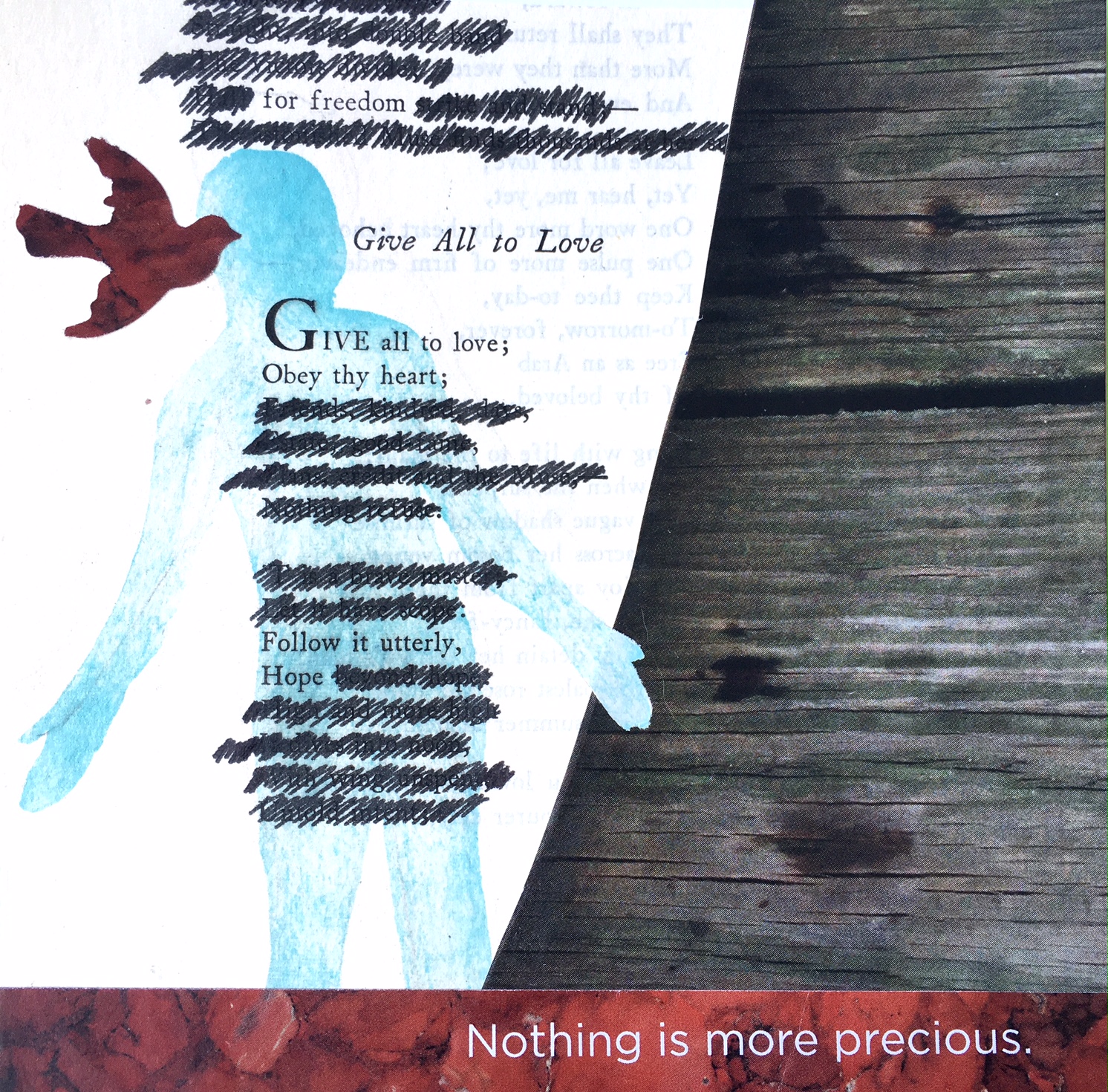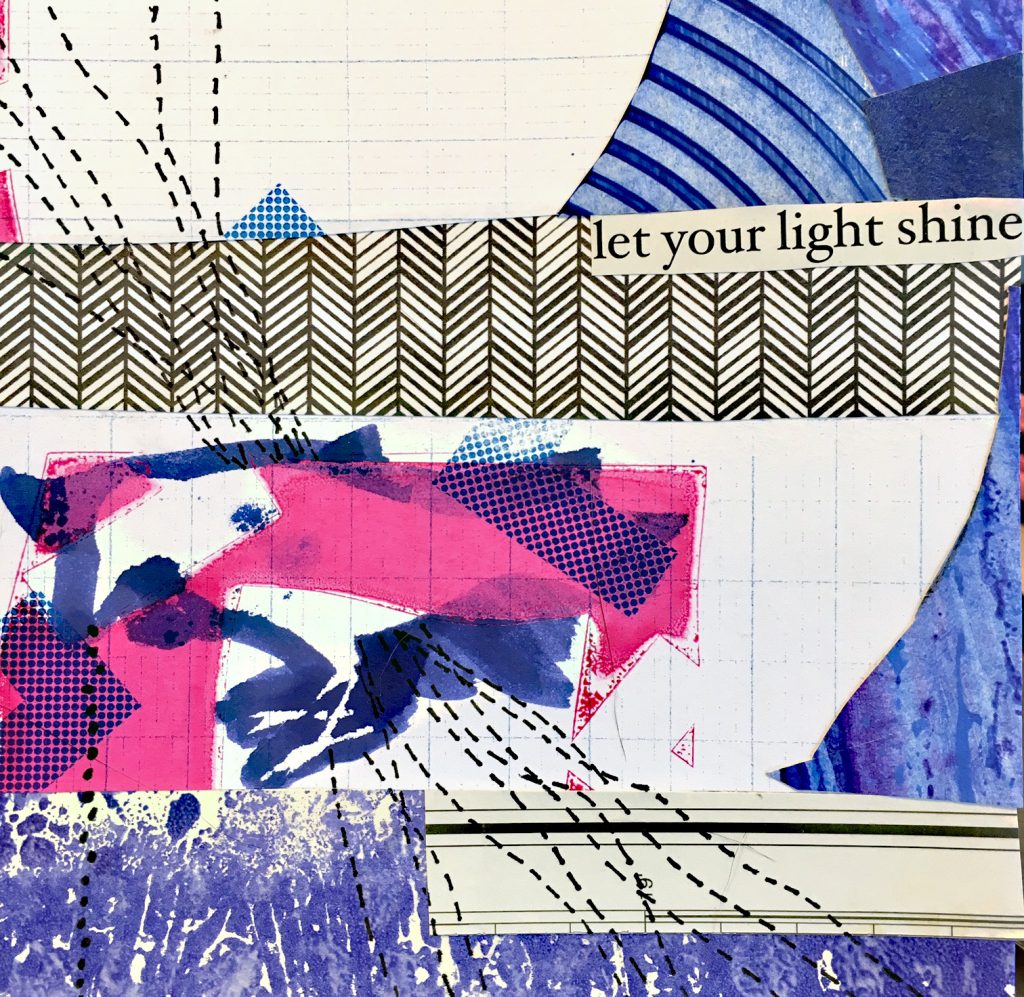
Smashing into intuition
December 23, 2016
Hope
December 25, 2016My husband, Doug, reads books about pain management, fitness and motivation regularly as a way to stay current in his medical speciality of physiatry. He often encourages me to read portions or all of these books. While on the surface art and fitness/athletics are different, when you start to dig into it similarities abound. (I wrote more about this here.) When I was anticipating my mastectomy, 18 months ago, my anxiety sky-rocketed through the roof–I was truly a mess.
Doug suggested I read Chapter One of Norman Doidge’s The Brain’s Way of Healing. Doidge is a specialist on neuroplasticity, or the idea that we can change our brain maps through various exercises and activities. In Chapter One, Doidge describes a technique developed by Michael Moskowitz M.D., a psychiatrist who became a pain specialist after dealing with his own excessive chronic pain. Moskowitz’s goal was to understand how the brain gets activated by pain and how it’s possible to change the way the brain fires in response to pain, eventually eliminating it. It was designed in response to chronic, not acute pain. Doug suggested I try his technique but apply it to my anxiety.
It involves the following steps that form the acronym MIRROR.
- Motivation – The chronic pain sufferer has to take an active role in their healing. Instead of taking a pill or turning to doctors to solve their pain, they must understand the physical process causing their pain and understand how and believe that their brain can reverse it.
- Intention – Contrary to what you might think, the immediate intention is not to get rid of the pain. It’s to focus the mind and visualize the pain brain map shrinking. The long term reward is pain relief.
- Relentlessness – Every time pain breaks through the consciousness threshold, it must be met with the visualizations. Self-directed neuroplasticity requires intense focus to happen.
- Reliability – The person needs to know that they can rely on their own brain to heal and function normally. The brain always seeks a stable state, which in this case, is chronic pain. So, its unconscious preference for stability has to be consciously overridden until pain free becomes the stable state.
- Opportunity – The person needs to view that each pain episode becomes a chance to repair a faulty system.
- Restoration – The goal of the process is not to mask the pain or deal with the symptoms as medication or anesthetics would, but it is to restore normal brain function.
Moskowitz said this about applying MIRROR, ‘I had to be relentless – even more relentless than the pain signal itself,’ he said. He greeted every twinge of pain with an image of his pain map shrinking, knowing that he was forcing his posterior cingulate and posterior parietal lobes to process a visual image.
I still use this to manage my anxiety. I slip into it, and know that for it to work I have to be relentless with the practice. I’m writing about this today, because I think this can be used to rewire other ways of thinking that no longer serve the soul. As a visual person, I imagine the section of my brain lighting up with anxiety shrinking and shrinking into a spit ball that I let go into the stream in our back woods where the bridge crosses it. Letting it go, and watching it flow away from me.
Today’s Quest 17 prompt is #keepdropadd by CHARLIE GILKEY . There are behaviors and practices that I need to drop so I can further the ones I want to keep and nourish the ones I want to add. I am going to apply the MIRROR technique to this to help me, knowing that I must be relentless. I offer it to you as we all move forward in love towards these days of light and loving. 
Today’s Assignment:
- Use one of your stencils, or make a new one to create the negative shape of it.
- Using black, white and two colors (I used blue and pink), compose a collage that has minute elements of a puzzle.

